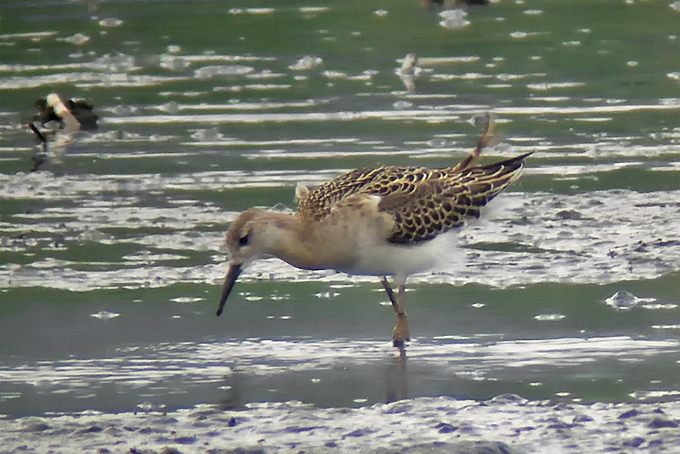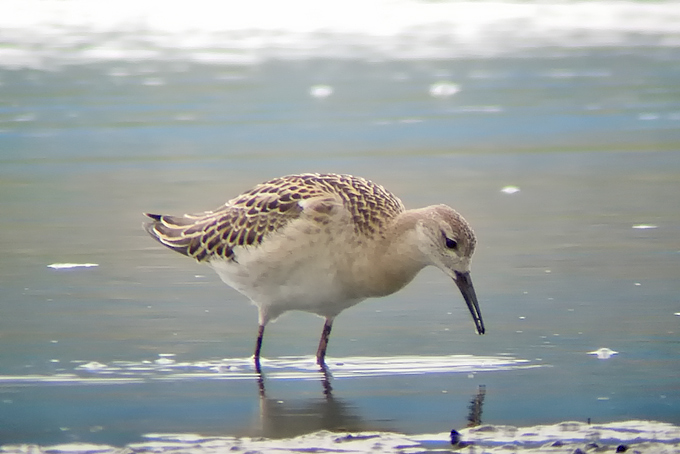 | E-mail to Birds Korea |
 | KWBS |
in the Region
 | The Oriental Bird Club |
 | BirdLife International (Asia) |
October
Warm (typically between 15-20°C mid-month), with often excellent birding weather: dry, sunny, and relatively calm. Occasional rain, although uncomfortable for birdwatchers, can produce excellent falls. One of the best times to be birding in Korea! Autumn migration is in full swing, and anything is possible!
Black-faced Spoonbill and Chinese Egret are still reasonably widespread. Hooded and White-naped Cranes start moving back south into Korea, and huge concentrations of Tundra Beans and Greater White-fronted Geese form at the Han-Imjin and Seosan. The charismatic Baikal Teal arrives in force mid-month, with up to 300,000 at Seosan and Haenam! Raptor migration is often strong, with Grey-faced Buzzards (day peak of 1,500 on Gageo Island), Oriental Honey Buzzards, the occasional eagle (especially Greater Spotted), and in some years, flocks of Amur Falcon. Shorebirds are still present in good numbers and persity, with a peak in Nordmann’s Greenshank. Visible migration peaks with Olive-backed Pipits becoming numerous by mid-month along the west coast, plus often excellent numbers of buntings and flycatchers. Pale, White’s, and small numbers of Dusky Thrushes are also on the move, along with the first of the typical winter passerines - Brambling and Siskin.
In 2005 the country’s first Swinhoe’s Rail in 70 years was reported from Hong Island, while recent Korean firsts for this month include Yellow-bellied Tit on Socheong in 2005 and Booted Eagle on Heuksan Island in 2006.
(The following records are a compilation of our own sightings and records sent in by other observers. As well as being posted on the Birds Korea website(s), selected records are also forwarded to other Korean-language birding websites; records of threatened species are arranged and forwarded to Birdlife International and national authorities when appropriate; flag images and records are passed to bodies responsible for their coordination throughout the flyway; and all records sent to us are used to compile annual reports and to support the evolving understanding of the status of many of Korea’s birds.)
Gageo Island, October 21 - 28
21st
From the ferry (intermittent outside access) a few Streaked Shearwaters. On the island, little evidence of incoming or newly-arrived birds. Two Bull-headed Shrikes. Several Stejneger’s Stonechats. Three Black-browed Reed Warblers. Seven White-cheeked and one Common Starling. Five Japanese Quails. A Japanese Sparrowhawk. A Eurasian Sparrowhawk. A Eastern Buzzard. A couple of Yellow-browed Reed Warblers. A small flock of Siskins. An even smaller group of Bramblings. Five or so Light-vented Bulbuls. A couple each of Olive-backed and Buff-bellied Pipits. A few calling Daurian Redstarts. 2-gu was almost birdless, with another two Buff-bellied Pipits and one Stejneger’s Stonechat.
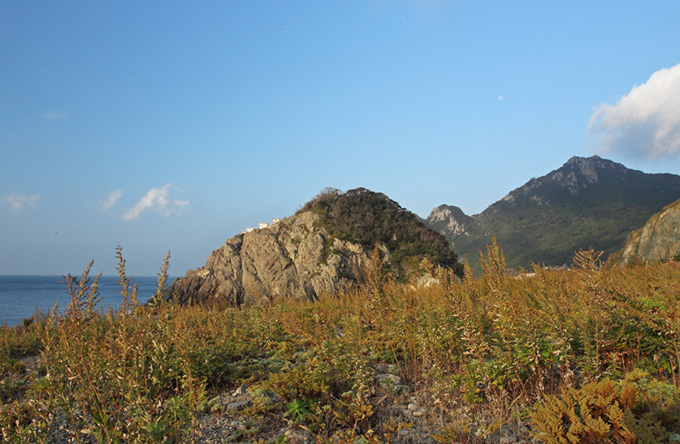
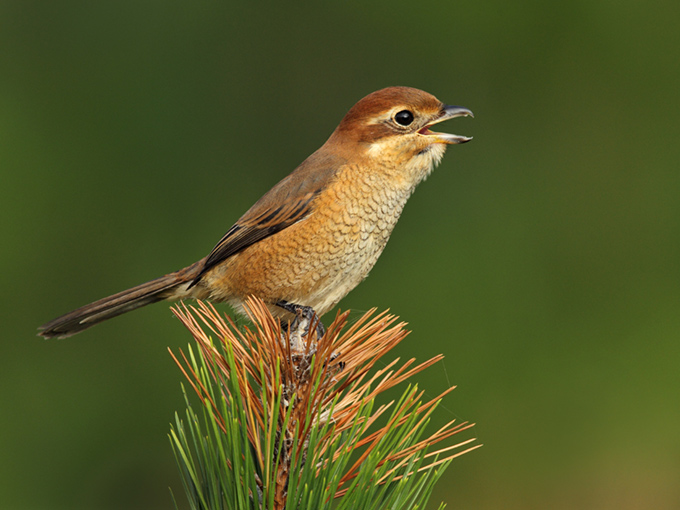
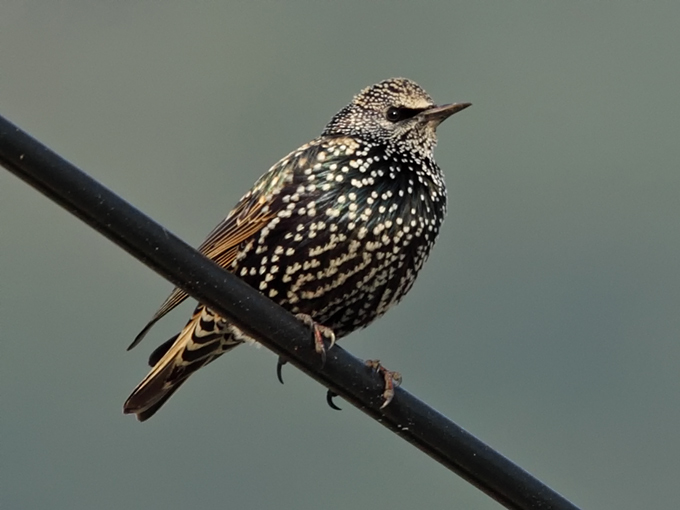
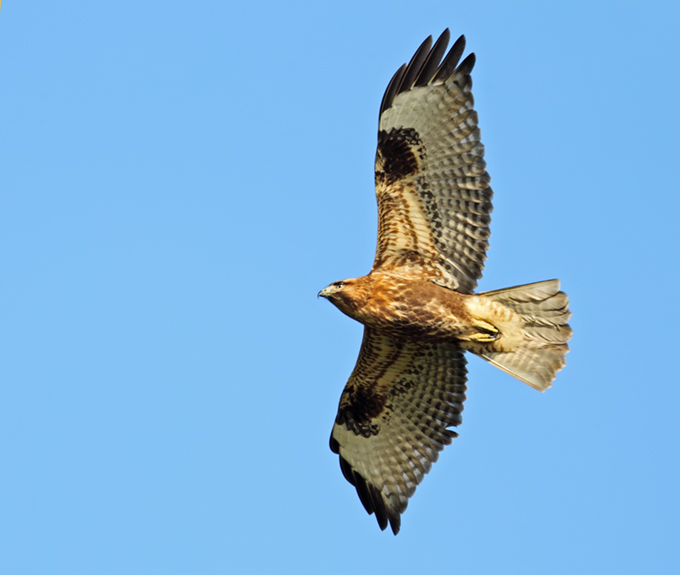
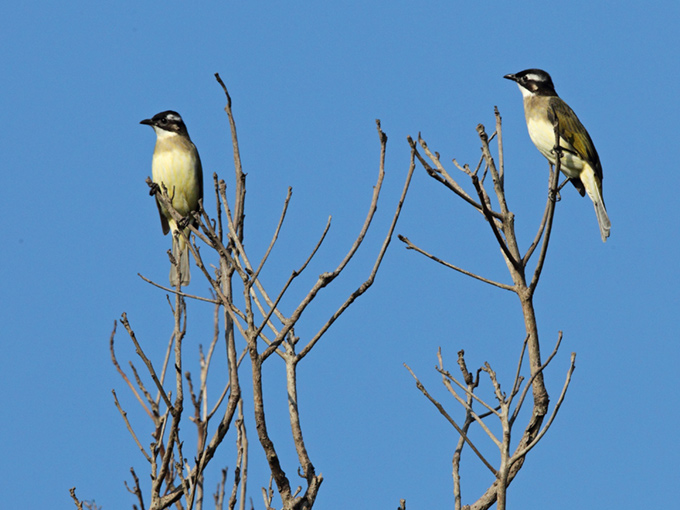
22nd
The next morning was warm and relatively calm. Winds from the East-Northeast. New birds or new numbers follow. A Long-tailed Shrike near the bamboo slope west of the village. Small numbers of Chestnut, Chestnut-eared, Black-faced, Little, Rustic and Yellow-throated Buntings. Two Greater Short-toed Larks. Four Oriental Honey Buzzards. A Peregrine Falcon. Several White Wagtails (one a rather interesting “black-backed” type) and a Grey Wagtail. Eight Japanese White-eyes. A Great Tit.
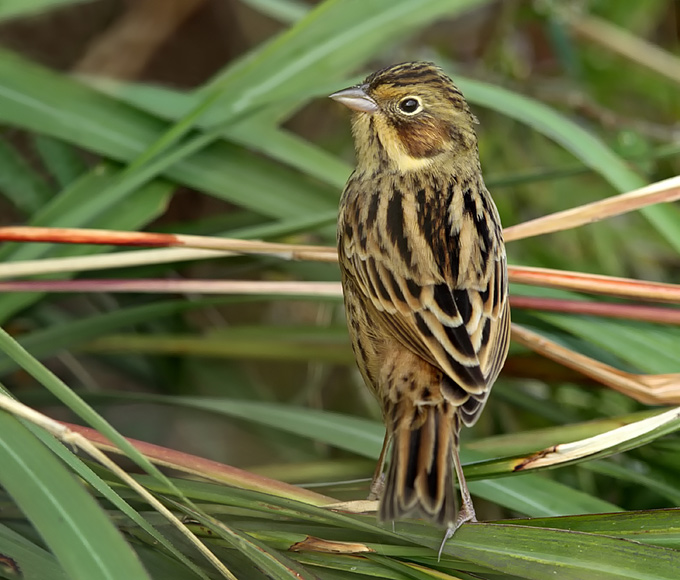
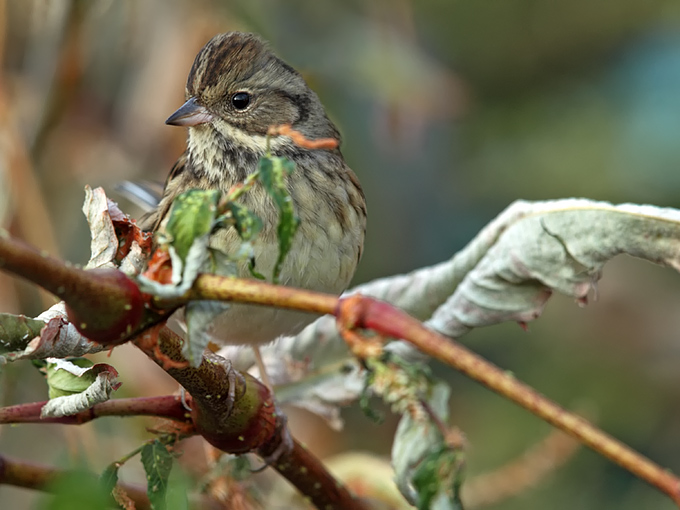
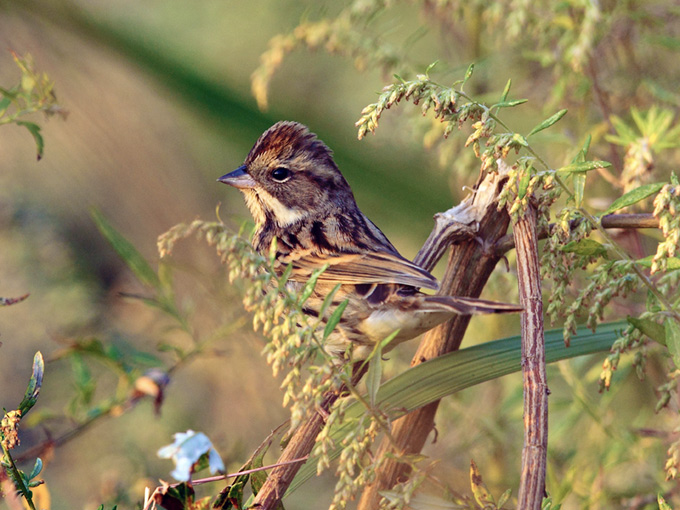
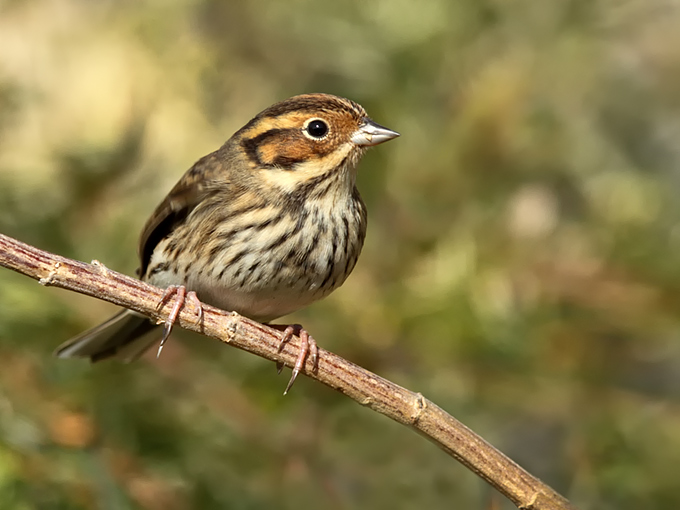
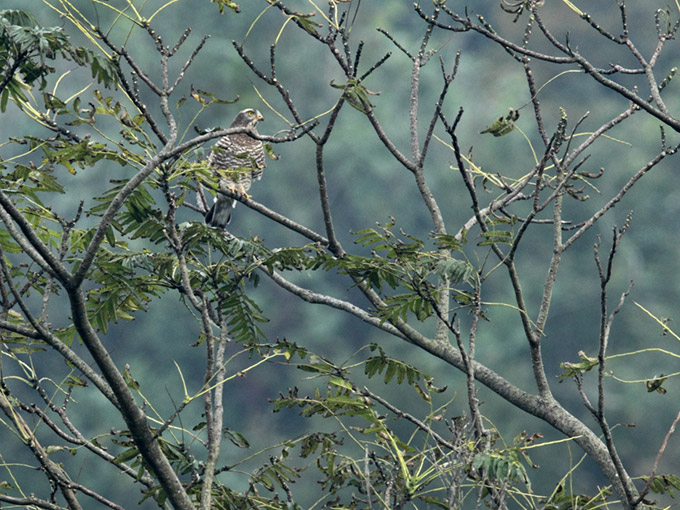
23rd
Increasing wind, still apparently from Northeast A Goshawk. Three or four (mostly heard) Dusky Warblers. Ominously, perhaps, 2 Magpies. A probable (on call) overhead Blyth’s Pipit.
24th
Very high winds, making viewing difficult. One Black Kite. A pair of Chinese Penduline Tits.
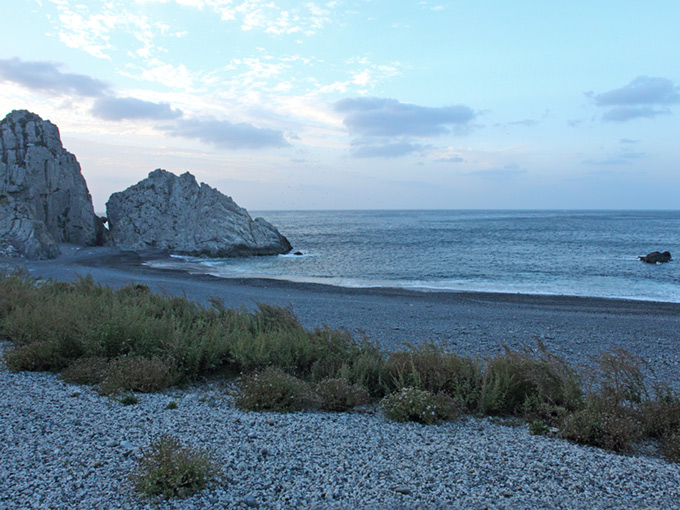
25th
High winds continue unabated. Some broken trees! Several Eurasian Skylarks. A Greenfinch. A Goldcrest.
26th
Again, high winds – more gusts than steady — and no ferry. The steep and narrow path from behind the school up the mountain yielded few birds (a Goldcrest, a Bull-headed Shrike, an Oriental Honey Buzzard, some Yellow-throated Buntings) but one real surprise: an apparent hen Pheasant bursting from cover among trees near the path just beneath the crest and flying rapidly into much deeper cover. The bird did not call, and had an oddly square-looking tail. A small flock of Red-rumped Swallows overhead. A few Pale Thrushes and a group of Japanese White-eyes.
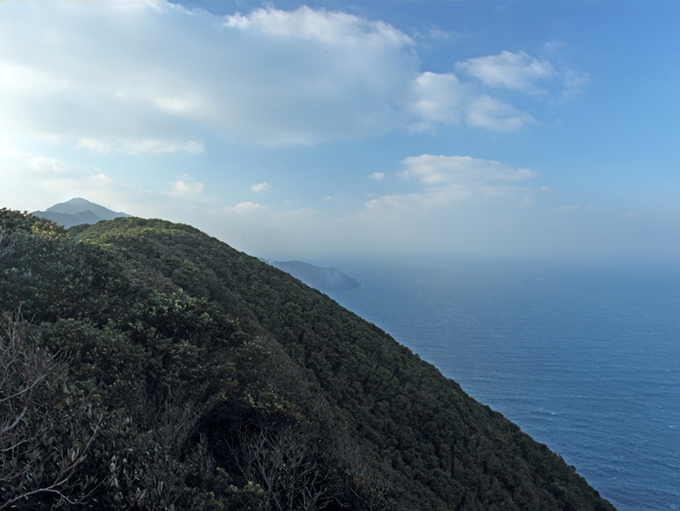
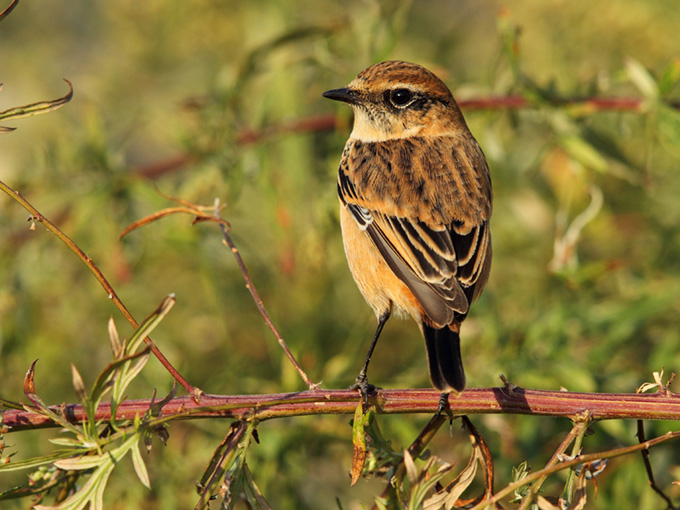
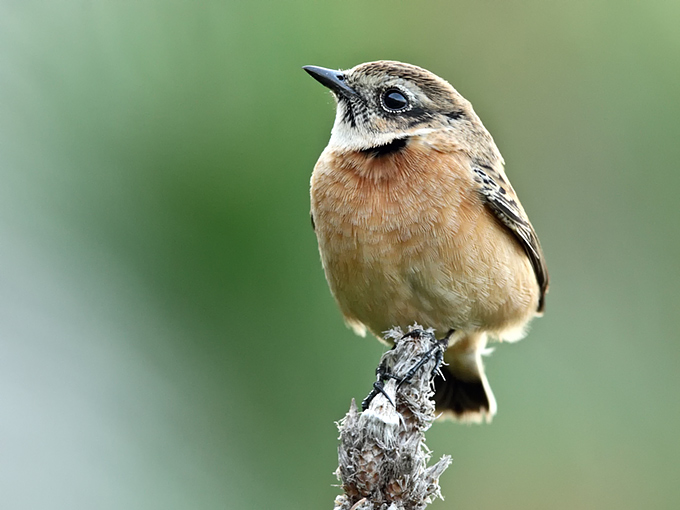
27th
Finally winds at a reasonable clip, becoming calmer as the day continued. In the morning, a brief glimpse of a Yellow Bittern above the quarry. Three Slavonian Grebes in the harbor. On the trek to 2-gu, Pale Thrushes (some seen, most heard) one or two Dusky Thrushes (heard) and a likely Naumann’s Thrush (also heard only). Small overhead flocks of Siskins and Bramblings. An attractively chunky Peregrine patrolling the ridge. One distant calling Rubythroat. A briefly calling Taiga Flycatcher. Numbers of scolding Japanese Bush Warblers. A pair of Gageo’s distinctive (in color and call) Varied Tits. In 2-gu, another Magpie, several Japanese Bush Warblers, Stejneger’s Stonechats and a Kestrel.

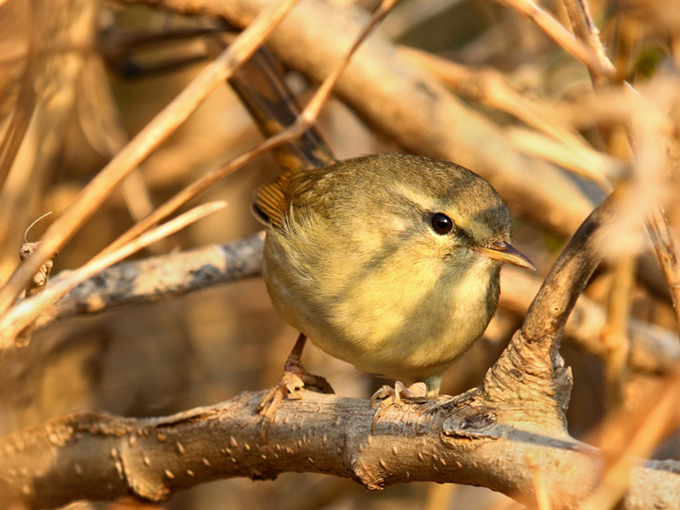
28th
Calm and hazy. No new species or markedly different numbers before the boat. No outside access on the boat and nothing tubular on the water.
Gageo Island, October 21
Quite a day … started relatively quietly at dawn. The first bird of note was a Dusky Warbler (whose call carried for quite some distance) at the base of the quarry. Slowly walking up to the top of the quarry revealed flocks of Brambling and Light-vented Bulbuls. A Zitting Cisticola, an Oriental Reed Warbler, a few Stejnerger’s Stonechat. Descending towards the main village, lots of buntings in the terraced fields – Rustic Buntings, Little Buntings, Black-faced Buntings and Pallas’s Reed Buntings. A Japanese Quail was flushed at very close quarters along with 2 Far Eastern Larks. There were at least 5 Black-browed Buntings in the bushes around the fields. However, the bird of the trip was a juvenile Steppe Eagle soaring over the main village affording some amazing views and pictures.
On the return ferry, drifting in and out of sleep, ~50 Streaked Shearwaters and 2 Black-legged Kittiwakes along with the usual assemblage of gulls.
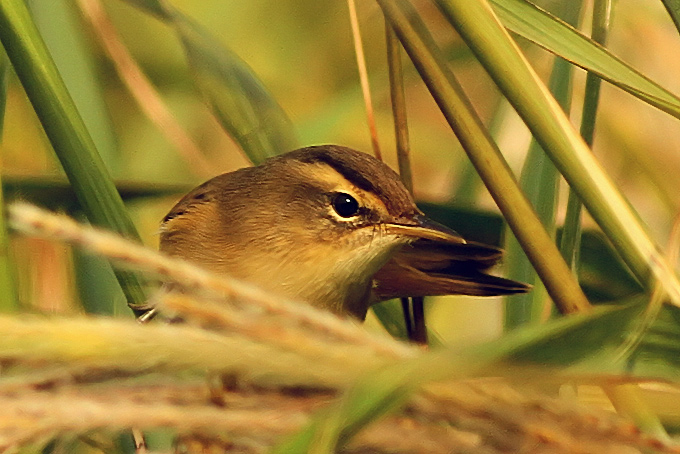
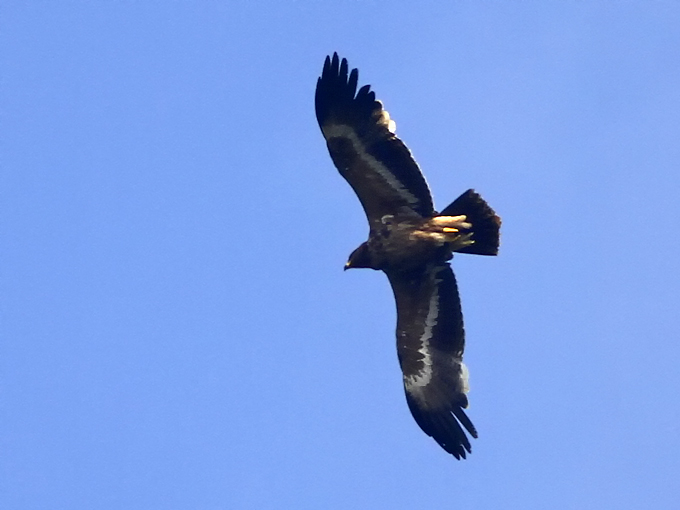
Haenam, October 20
A protected cove held c. six hundred Coots and small numbers of Eurasian Teal, Eurasian Wigeon, Falcated Teal, Spot-billed Ducks and Mallards, three Eurasian Spoonbills, and several each of Grey Heron, Intermediate and Great Egret. One Common Snipe, two Eurasian Kestrels. One Common Buzzard. Eight Far-eastern Skylarks. Several Buff-bellied Pipits. Two Olive-backed Pipits. Two Bull-headed Shrikes. Two Oriental Reed Warblers. About a dozen Azure-winged Magpies. Scattered calling Daurian Redstarts. Several Stejneger’s Stonechats. Several small flocks of Taiga Bean Geese flying over and a small group on a rice-field, in total c. one hundred fifty.
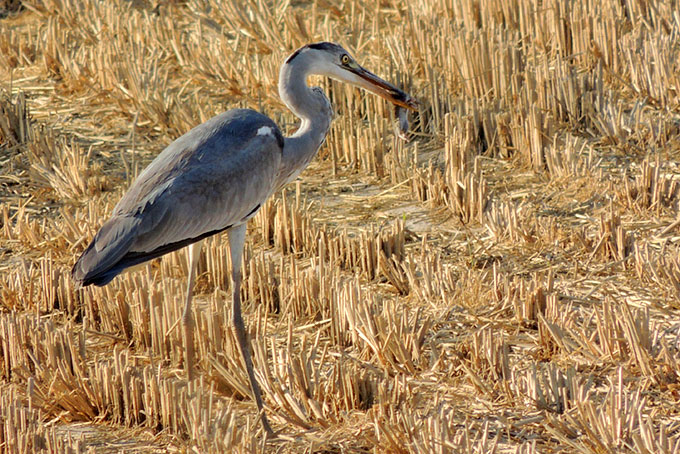
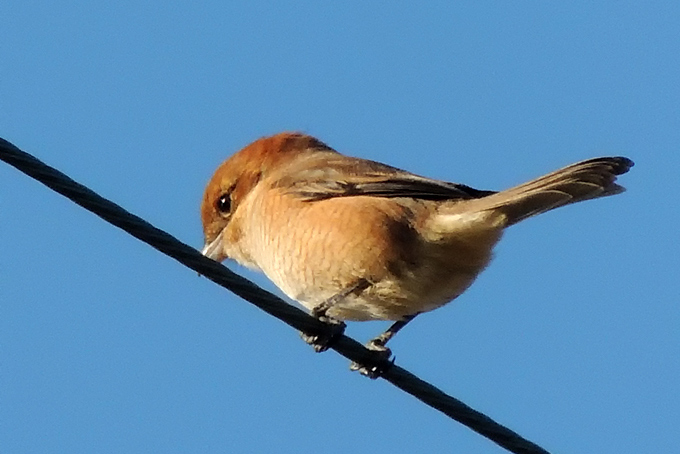
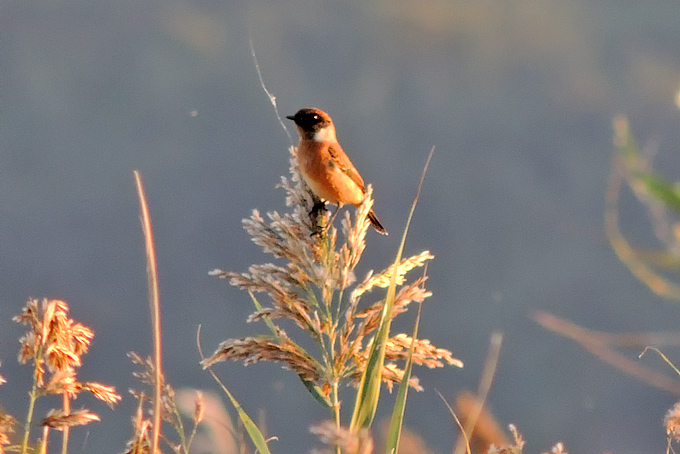
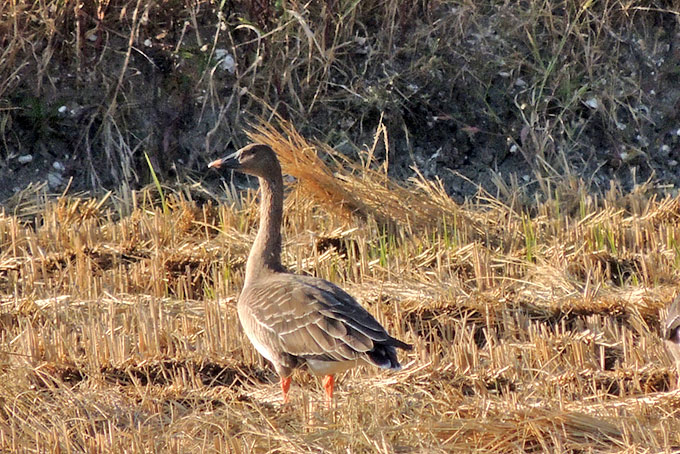
Gageo Island, October 20
A 12hr and 25km hike covering 2 and 3-gu along with the hilly trails of 1-gu. Cloudless blue skies and very few birds in the open. The long hike to 3-gu produced some thrushes though all of them were extremely reluctant to reveal themselves. Right after the “pass”, a presumed Siberian Thrush in thick cover. Lots of Japanese White-eyes along the road (mostly japonicus) along with a probable juvenile Black-throated Thrush (seen briefly along the break in the foliage). A few Eastern buzzards in the sky. A Dusky Thrush along a temporary road construction to 3-gu.
Cheongdam Park, October 20
This small inner city park seemed quite birdy, probably due to its mix of deciduous and berry trees, natural water feature, insect-rich rotting tree-stumps and log piles. Photography among the dark shady trees was quite a challenge however.
- Oriental Turtle Dove Streptopelia orientalis.
- Japanese Pygmy Woodpecker Dendrocopos kizuki.
- Great Spotted Woodpecker Dendrocopos major. Two or three.
- Grey-headed Woodpecker Picus canus.
- Eurasian Jay Garrulus glandarius. Plentiful, due to the preponderance of native oak trees.
- Eurasian Magpie Pica pica.
- Large-billed Crow Corvus macrorhynchos.
- Marsh Tit Poecile palustris.
- Varied Tit Poecile varius. Several collecting acorns.
- Eastern Great Tit Parus minor.
- Brown-eared Bulbul Hypsipetes amaurotis.
- Yellow-browed Warbler Phylloscopus inornatus. Two or three seen.
- Rufous-tailed Robin Luscinia sibilans. Extremely skulking and easy to overlook, sticking to the vicinity of the wood pile.
- Red-flanked Bluetail Tarsiger cyanurus. One.
- Eurasian Tree Sparrow Passer montanus.
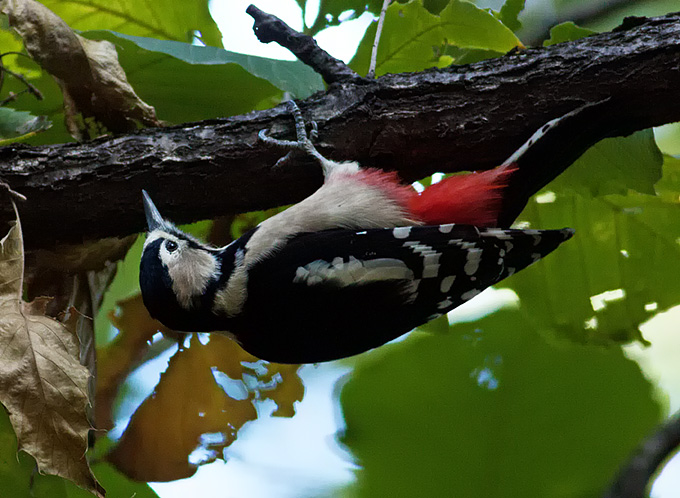
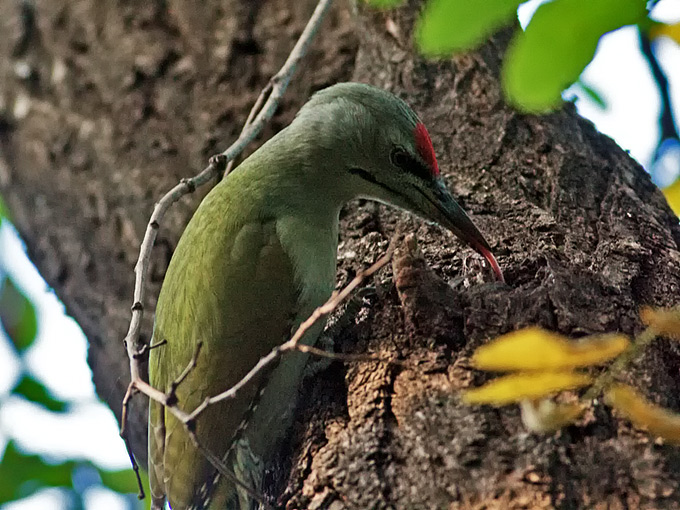
Gageo Island, October 19
Drawn in by the charm of this remote island … I decided to spend a second weekend there. Excellent weather conditions meant very few birds of note on the island itself
The sea crossing produced about 4000~5000 Black-tailed Gulls, ~300 Mongolian Gulls near the outer islands along with ~150 Streaked Shearwaters ( in between the outer island chains … most prominently between Hatae and Sangtae islands). Very few birds of note on the island itself. A Pechora Pipit outside the pension, a few White and Yellow wagtails at the garbage dump, a Lanceolated Warbler and an Oriental Greenfinch at the quarry. Hiking up to the “pass”, an extremely skulking Yellow-breasted Bunting.
Weyeon Island, October 14
Just after dawn, the trip’s highlight: an apparent “red-throated” Black-throated Thrush, seen well in good light but unfortunately not photographed. Initial identification of bird in profile was a 1st-year male Black-throated Thrush: a sleek medium sized thrush with slate-grey back, pure white flanks (a little thin black streaking) and under parts, entirely cold-toned (slate, sooty grey and black) face pattern and apparent black throat with white spotting. When the bird turned slightly, a neat red throat was revealed, bordered in black. The bird vanished when I moved to get my camera and was not relocated - vegetation in the area is very dense. Comments (e.g. on hybrids) are welcome - I left my Clements-Hathaway in the USA!
Not long afterwards, a Wryneck and a calling Pallas’ Leaf Warbler. 2 Stejneger’s Stonechats. 2 Radde’s Warblers and a Dusky Warbler. 1 Oriental Honey Buzzard. 10 White-cheeked Starlings. 2 Eurasian Kestrels. A Peregrine Falcon carrying an apparent pipit. 2 Pale Thrushes. 2 Oriental Reed Warblers. 2 Little Buntings and 1 Yellow-breasted Bunting. 1 Yellow-throated Bunting. 1 small flycatcher sp. 1 Eastern Crowned Warbler. 1 Black Kite and 2 more Japanese Sparrowhawks.
On the return boat, a crowd of gulls around a little boy and his father throwing sae-oo kang. Heuglin’s and Black-tailed Gulls. Shrimp-in-a-cracker - what more could a gull want?
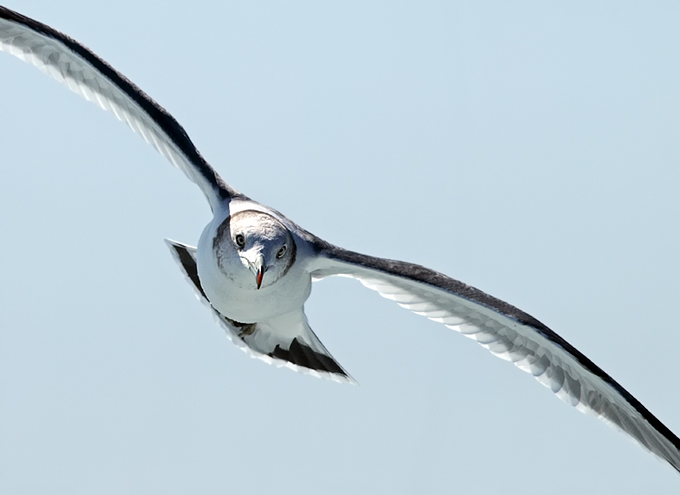
Gageo Island, October 13
Starting early at dawn in an attempt to get a photograph of the presumed Pallas's Grasshopper Warbler. A 40 min wait near the bushwhere it was last spotted and trying some sound playback yielded a few millisecond view as it darted across a small opening in between 2 bushes. The wait also yielded 2 Chestnut Buntings, 2 Long-tailed Shrikes and a few Olive-backed Pipits. A brisk hike towards 2-gu yielded some new (and nice) birds. First was a juvenile White-breasted Waterhen quickly followed by a party of Varied Tits. There were also a few Brown Shrikes in the area. A juvenile Greater Spotted Eagle was hunting for breakfast. There were a few Stejneger's Stonechats, Yellow-browed Warblers and a single Grey-streaked Flycatcher. Walking back towards the main village, a Lanceolated Warbler.
Weyeon Island, October 13
Warm and calm on the afternoon: relatively few birds in evidence. 1 Yellow-browed Warbler calling, c. 12 Olive-backed Pipits, 1 or 2 overhead flocks of Eurasian Siskins (c. 25 and 40, respectively), a smaller flock (14) of Bramblings, 2 Blue Rockthrush, small numbers (30+) of Black-faced Buntings, about 8 Chestnut Buntings, several very vocal Bull-headed Shrikes, 1 Japanese Sparrowhawk and 1 Eurasian Sparrowhawk, a flock (heard only) of Japanese White Eyes, 1 or 2 (again only heard) Daurian Redstarts.
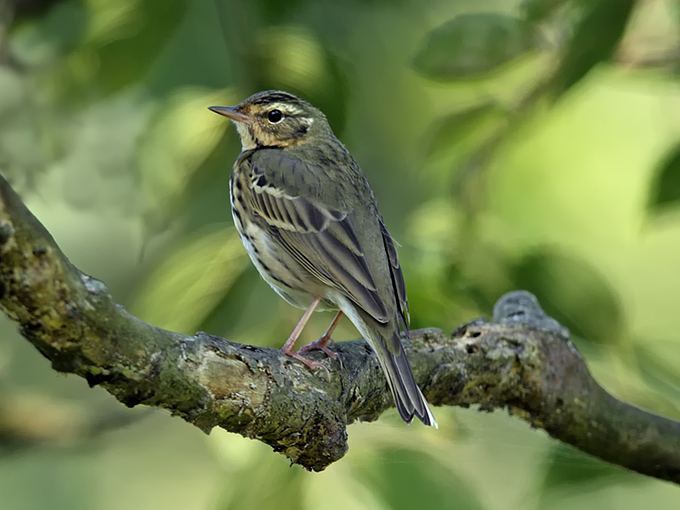

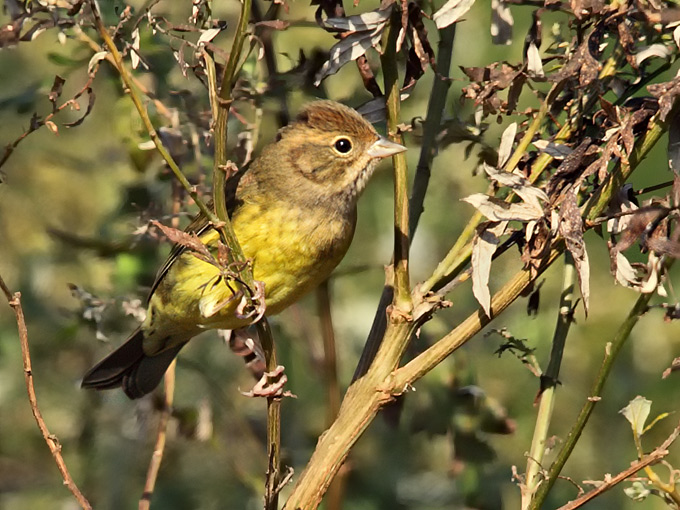
Gageo Island, October 12
A quick weekend trip (more of a dash rather!) to Gageo on the weekend under cloudless blue skies. The long ferry ride yielded 1 Swinhoe's Storm Petrel and a handful of Streaked Shearwater. Right outside the pension, 1 Richard's Pipit and 1 Blue Rock Thrush. Right behind the village church in an unattended garden, 1 Black-browed Reed Warbler, 8 Little Buntings and a probable Pallas's Grasshopper Warbler (based on partial views and prolonged wait in an attempt to get a photo). The garbage dump had about 3 dozen White Wagtails, 2 Grey Wagtails and 7 Light-vented Bulbuls. Walking towards the quarry, a female Amur Falcon in the sky (1 of the 3 encountered during the stay). Walking up the quarry, persistent call (and eventually views) of a Bull-headed Shrike under a blazing sun. Hiking up the quarry, 2 squabbling Hobbies and a few Barn Swallows. At around 3pm, Grey-faced and Oriental Honey Buzzards formed a rising kettle (consisting of about 400~500 birds) and peeled off from the top slowly gliding westwards. About half and hour later, the sky was filled with Red-rumped Swallows (a conservative estimate of about 1600~2000 birds … their movement making it difficult to count). Hiking up the hill on the road to 2-gu, a couple of Common Kestrels and a new influx of (mostly) Grey-faced Buzzards drifting in from the north coming down to roost. A rough estimate would put it to about 700 birds. A single Common Magpie spotted in the village on an electric pole.
Songdo Lagoon, October 12
Just an update on Tim's report from Songdo Lagoon (aka Namdong Reservoir) from Sunday. In addition to all the dabbling ducks, my first Common Pochard (31) and Greater Scaup (7) of the autumn had arrived. A dozen Common Shelducks had moved over from the mudflats. The flock of 12 delightful Marsh Sandpipers remain, but only one Spotted Redshank, and four Dunlin. No Grey Plover, but Tim’s note reminded me that I had been very surprised to see 4 Great Knot on the mud on 31 August, certainly a rare freshwater encounter – they really should know better! Highlight of Sunday afternoon was a splendid adult female Peregrine chasing the ducks, before perching in the dead trees on the island. An Osprey occupied another tree. This caused great consternation among the local Great Cormorants when they came in to roost in the evening to find their favourite perches already taken by a couple of intimidating raptors! A solitary Black-faced Spoonbill was feeding in the shallow water, with another 5 on the mudflats. The Spoon-billed Sandpiper was still on the University mudflats, but all its Red-necked Stint chums had moved on and he or she had to make do with Dunlins for company. At Michuhol Park, a juvenile Bull-headed Shrike was finding plenty of beetles to eat. Other birds there included Mugimaki Flycatcher (2), Olive-backed Pipit (3), Yellow-browed Warbler (5) and Daurian Redstart (1). No sign of last year’s Chinese Nuthatches though.
Yongjeong Island, October 12 & 13
A walk along the southern mudflat and an afternoon look around Yongyu-do brought at least one unexpected surprise.
The newly-constructed roads intersecting the island are taking quite a toll on the wildlife. The amount of roadkill on them in terms of birds, snakes and other creatures is quite shocking.
- Common Pheasant Phasianus colchicus.
- Tundra Bean Goose Anser serrirostris. A skein of about 25.
- Mallard Anas platyrhynchos.
- Eastern Spot-billed Duck Anas zonorhyncha.
- Little Grebe Tachybaptus ruficollis.
- Black-faced Spoonbill Platalea minor. 76 on the southern mudflat, five at Yongyu-do.
- Black-crowned Night Heron Nycticorax nycticorax. One.
- Grey Heron Ardea cinerea.
- Great Egret Ardea alba.
- Little Egret Egretta garzetta.
- Great Cormorant Phalacrocorax carbo.
- Northern Goshawk Accipiter gentilis. One over the mountain ridge.
- Eurasian Hobby Falco subbuteo. One still present in their breeding area.
- Grey Plover Pluvialis squatarola. Twenty or so.
- Kentish Plover Charadrius alexandrinus. 110+ within view on the southern mudflat.
- Lesser Sand Plover Charadrius mongolus. Two or three.
- Eurasian Woodcock Scolopax rusticola. One (roadkill) is noteworthy. There are usually only two or three records nationwide per year. This also appears to be a first for the island.This species is unfortunately prone to being killed by traffic due to their habit of feeding in roadside ditches.
- Eurasian Curlew Numenius arquata. About 50 on the southern mudflat.
- Far Eastern Curlew Numenius madagascariensis. At least 250.
- Spotted Redshank Tringa erythropus. One on the saltpans.
- Common Greenshank Tringa nebularia. Seven on the shrimp ponds.
- Great Knot Calidris tenuirostris. One on the southern mudflat.
- Red-necked Stint Calidris ruficollis. Twenty or so.
- Dunlin Calidris alpina. 55 on the southern mudflats.
- Black-tailed Gull Larus crassirostris.
- Mongolian Gull Larus mongolicus. Increasing numbers.
- Heuglin's Gull Larus heuglini. Two taimyrensis.
- Oriental Turtle Dove Streptopelia orientalis.
- Common Kingfisher Alcedo atthis. Two still in their regular nest area."Faster than a speeding bullet".
- Great Spotted Woodpecker Dendrocopos major.
- Bull-headed Shrike Lanius bucephalus. Two back on patrol. This species seems to be absent from lowland areas in the summer.
- Eurasian Magpie Pica pica.
- Large-billed Crow Corvus macrorhynchos.
- Eastern Great Tit Parus minor.
- Brown-eared Bulbul Hypsipetes amaurotis.
- Yellow-browed Warbler Phylloscopus inornatus. Five or six calling.
- Vinous-throated Parrotbill Sinosuthera webbiana.
- Grey-backed Thrush Turdus hortulorum. One hit by a car.
- Daurian Redstart Phoenicurus auroreus. Two have returned from their upland breeding areas.
- Eurasian Tree Sparrow Passer montanus. Including one hit by a car.
- Grey Wagtail Motacilla cinerea. One shadowing a shrike and sounding the alarm.
- White Wagtail Motacilla alba. Fair numbers of leucopsis and one or two apparent ocularis on the saltpans.
- Black-faced Bunting Emberiza spodocephala. Plentiful.

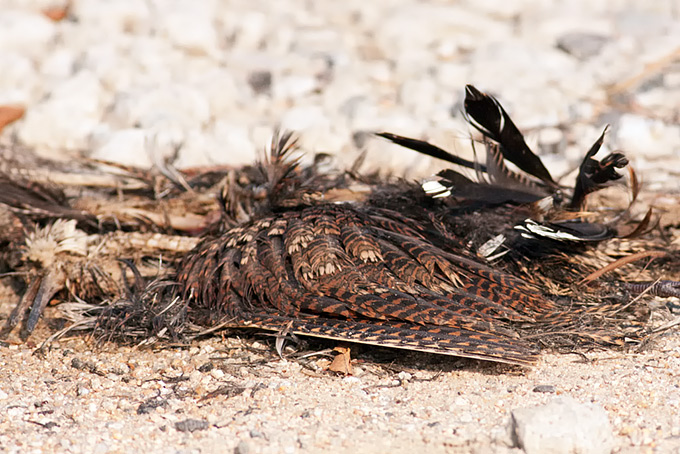

Songdo, October 9
A morning visit (the first in some years!) to Songdo’s Lagoon. Despite the warm weather, a hint of coming winter: among many of the same waterfowl species reported by Tim Edelsten on October 5 (e.g. Gadwall, Eurasian Wigeon, Eurasian Teal, Mallards, and Eastern Spot-billed Ducks), 7 Common Shelduck and a raft of a dozen Common Pochards. 2 separate flocks of Common Greenshank (c. 400 and 30) and single-digit counts of Common Redshank, Common Sandpiper, Green Sandpiper and Black-tailed Godwit. (Only) 2 Black-faced Spoonbills in flight. A single Little Grebe and several Great Cormorants. As in T.E.’s visit, Great, Little and Intermediate Egrets and Grey Herons. A young Moorhen. A flyover Peregrine falcon. 2 calling then showing Black-faced Buntings. A calling Yellow-browed Warbler.

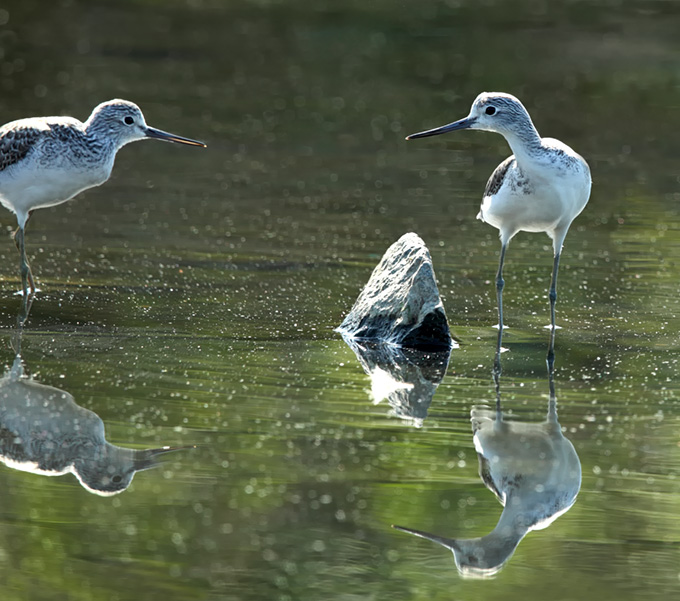
Songdo, October 3 & 5

© EAAFP
On the evening of October 3, Judit Szabo and I visited the mudflats near the University at Songdo, in the company of four young ladies from the Korean University Birdwatching Society. This area is the process of being reclaimed but for now contains a small area of mudflats that are only partially tidal, so that at high tide, shorebirds normally roosting at Gojan often flock here. A scan of a group of about 60 Red-necked Stints and 100 Dunlin quickly revealed a first winter Spoon-billed Sandpiper dashing along the edge of the mud, bullying Dunlin and even Greenshanks along the way. The bird was still present on October 5 and feeding actively.
Other shorebirds included 600 Eurasian Curlew, settling in for the winter, 190 Eastern Oystercatchers, 500 Common Greenshanks (included two leg-flagged birds from Australia), 3 juvenile Spotted Redshanks, 15 Great Knot, 30 Mongolian Plovers, 20 Grey Plovers and 10 Bar-tailed Godwits. These shared the mudflats with 51 Black-faced Spoonbills, 100+ Great Cormorants and 26 Common Shelducks. 30 Bean Geese flew over on the October 4, with 18 the next day. A juvenile Peregrine occasionally put up all the shorebirds (usually in mid-count, grrr!).
27 Black-faced Spoonbills were at Gojan and a further 2 on Namdong Reservoir. Also at a bird-crowded Namdong on October 3 were 900 Spot-billed Ducks, 200 Shoveler, 150 Eurasian Teal, 10+ Gadwall and single Mallards and Pintail, all in boring eclipse plumage. On the stream were 40 Greenshanks, 2 Common Redshanks, 1 Green Sandpiper and 1 Common Snipe.
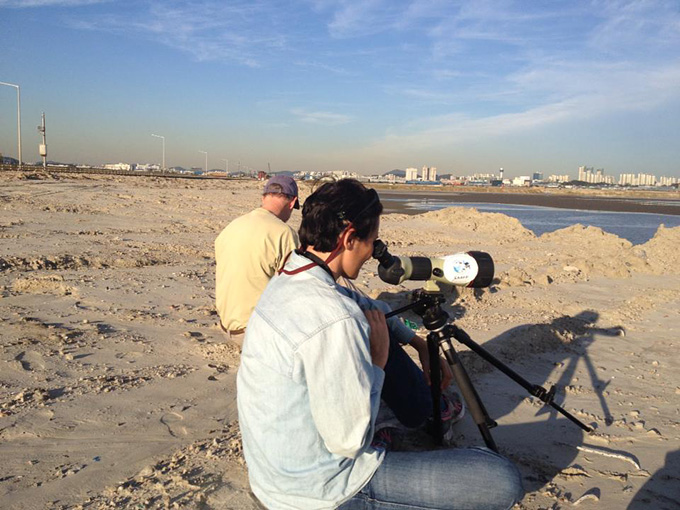
Songdo Lagoon, October 5
- Tundra Bean Goose Anser serrirostris. An overhead skein of 22.
- Gadwall Anas strepera. Seven.
- Eurasian Wigeon Anas penelope. One coming out of eclipse looked distinctively dark in the sunshine.
- Mallard Anas platyrhynchos.
- Eastern Spot-billed Duck Anas zonorhyncha.
- Northern Shoveler Anas clypeata. Already 250+.
- Northern Pintail Anas acuta. c. 20.
- Garganey Anas querquedula. One.
- Eurasian Teal Anas crecca.
- Little Grebe Tachybaptus ruficollis. Four.
- Black-faced Spoonbill Platalea minor. Five, including a juvenile.
- Grey Heron Ardea cinerea.
- Great Egret Ardea alba.
- Intermediate Egret Egretta intermedia.
- Little Egret Egretta garzetta.
- Great Cormorant Phalacrocorax carbo.
- Common Kestrel Falco tinnunculus.
- Grey Plover Pluvialis squatarola. One, is probably the first I have ever seen on freshwater.
- Common Snipe Gallinago gallinago.
- Black-tailed Godwit Limosa limosa. Fourteen still present.
- Spotted Redshank Tringa erythropus. Four.
- Marsh Sandpiper Tringa stagnatilis. Twelve, in a loose flock.
- Common Greenshank Tringa nebularia.
- Green Sandpiper Tringa ochropus.
- Black-tailed Gull Larus crassirostris.
- Mongolian Gull Larus mongolicus.
- Oriental Turtle Dove Streptopelia orientalis.
- Eurasian Magpie Pica pica.
- Eastern Great Tit Parus minor.
- Brown-eared Bulbul Hypsipetes amaurotis.
- Eurasian Tree Sparrow Passer montanus.
- White Wagtail Motacilla alba.
Butterflies enjoying the autumn sunshine included.
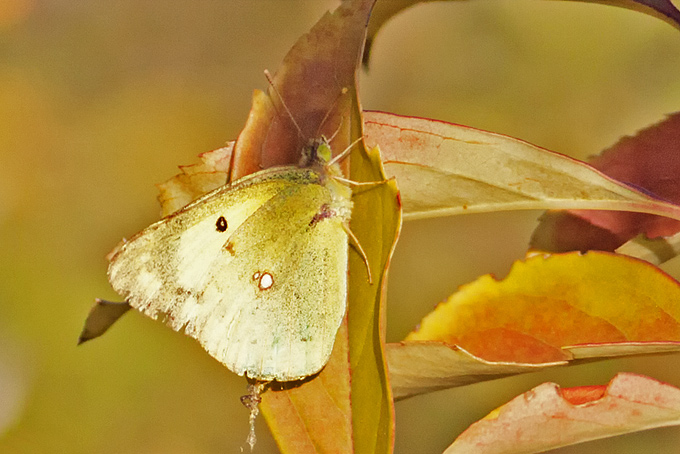
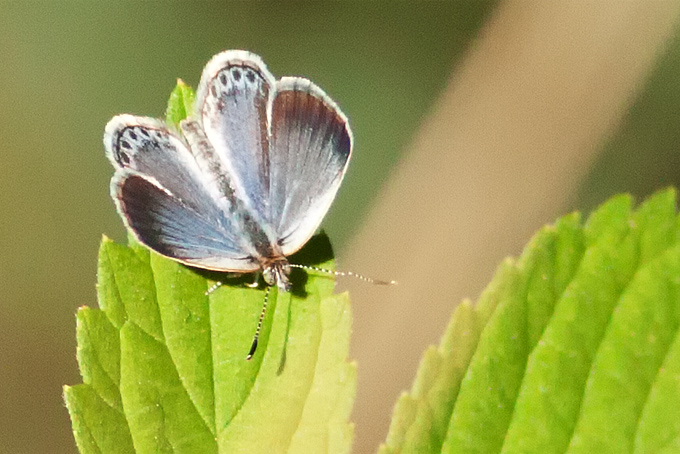
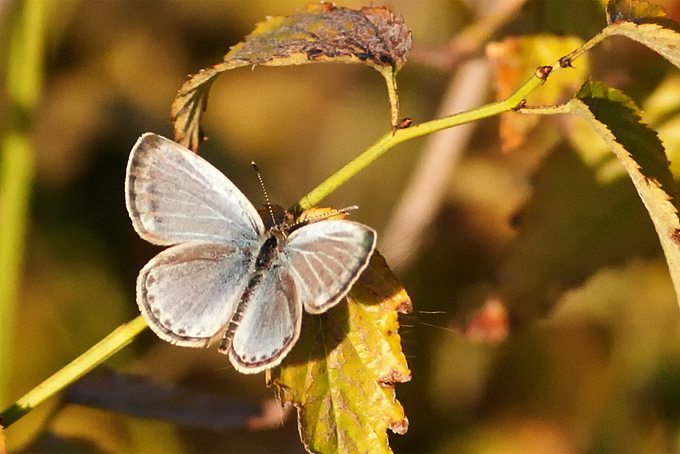
Mokpo Namhang Urban Wetland, October 2
After a rainy night the morning slowly started to clear and occasionally the sun came through. Like two days earlier, most birds were still the same, of note were: the Black-winged Stilt still present, 5 Eastern Spot-billed Duck had arrived, instead of the two Terek Sandpipers there was a Grey-tailed Tattler today, a Common Kingfisher was first heard and a while later also seen and the biggest surprise was a Ruff, a species that was seen on the site before only in September 2008.
